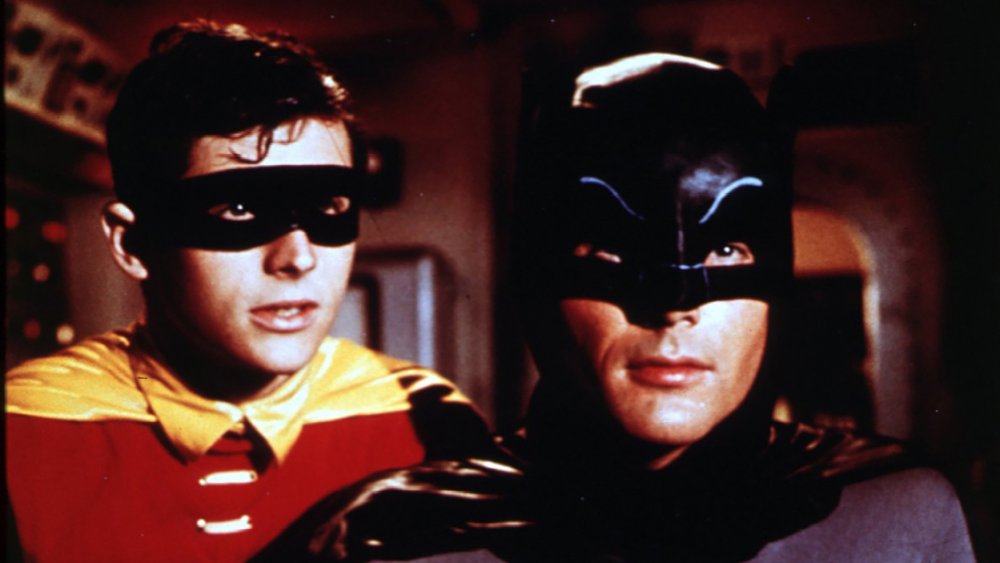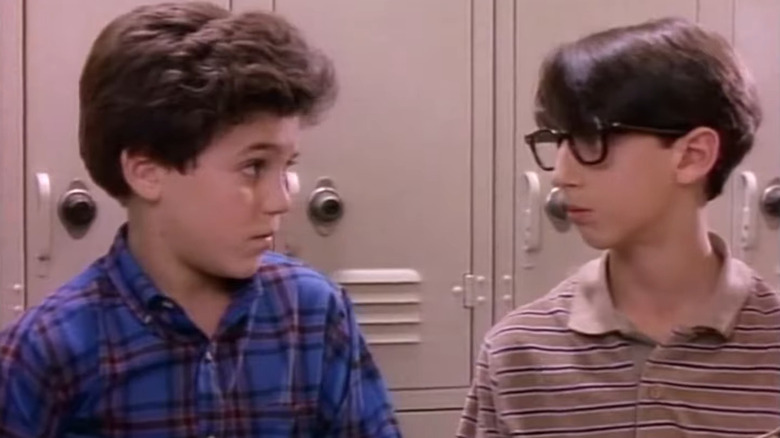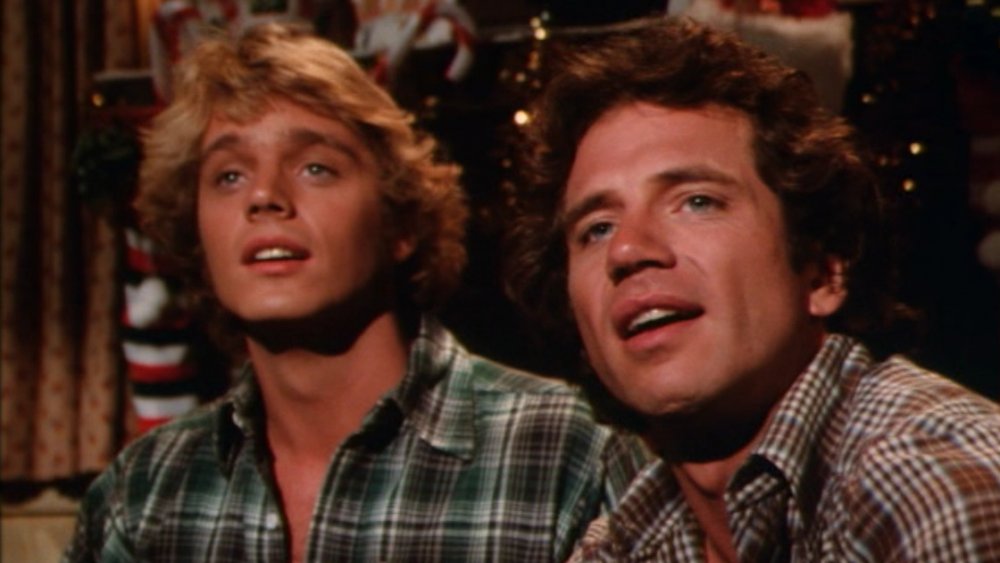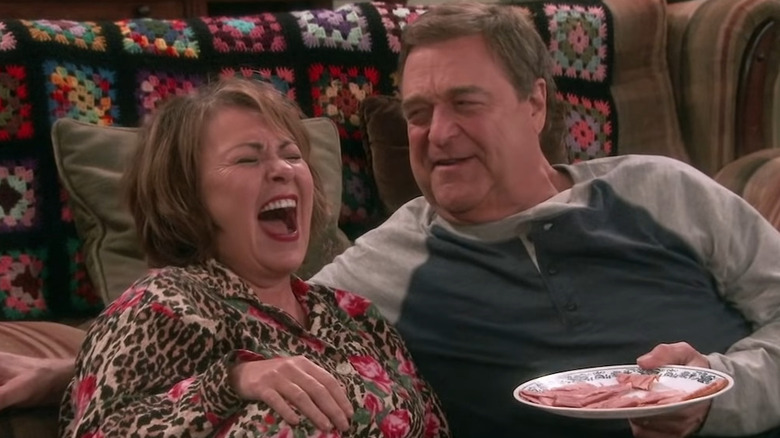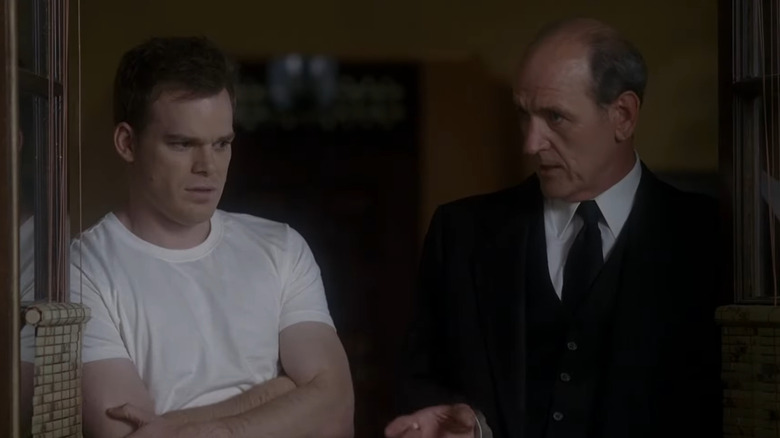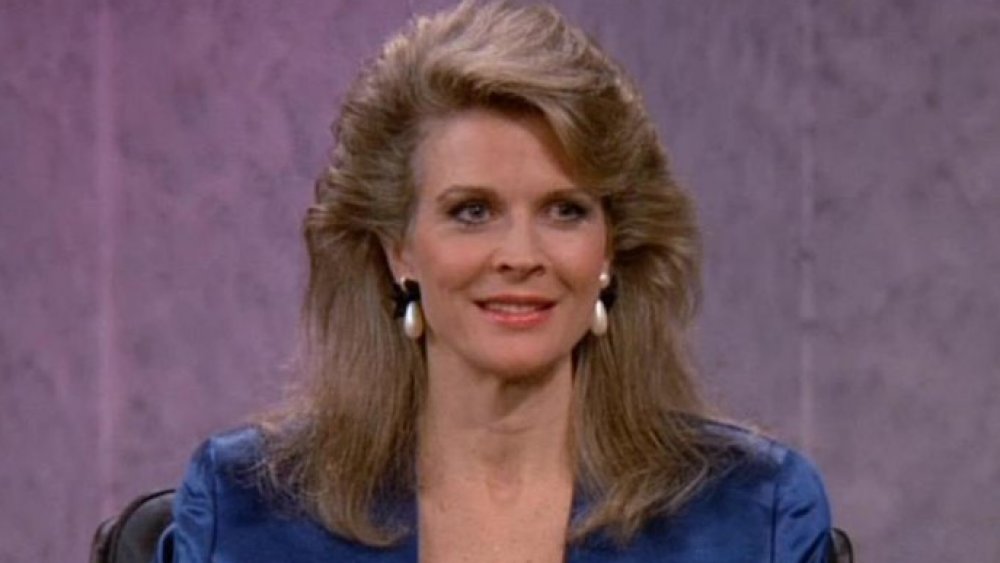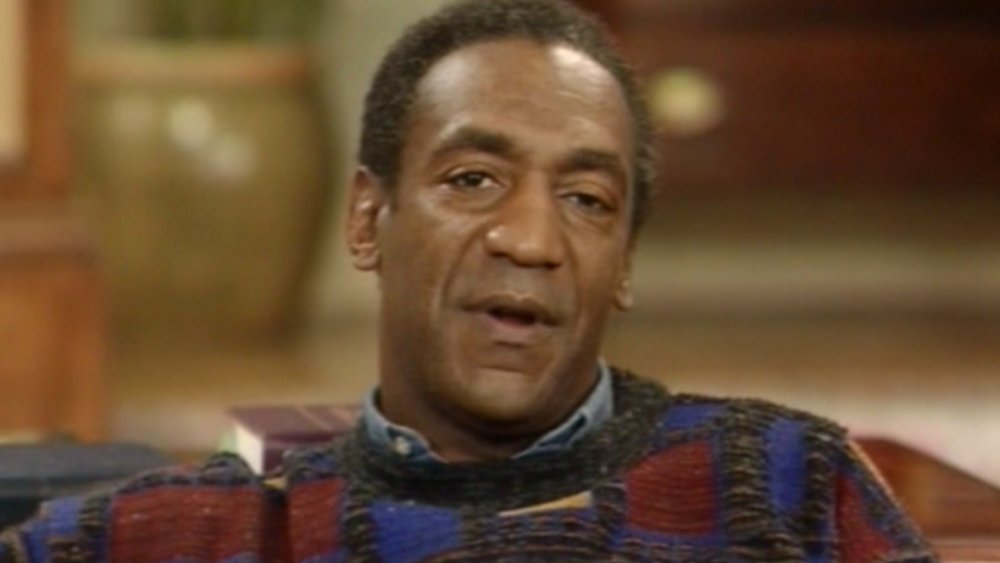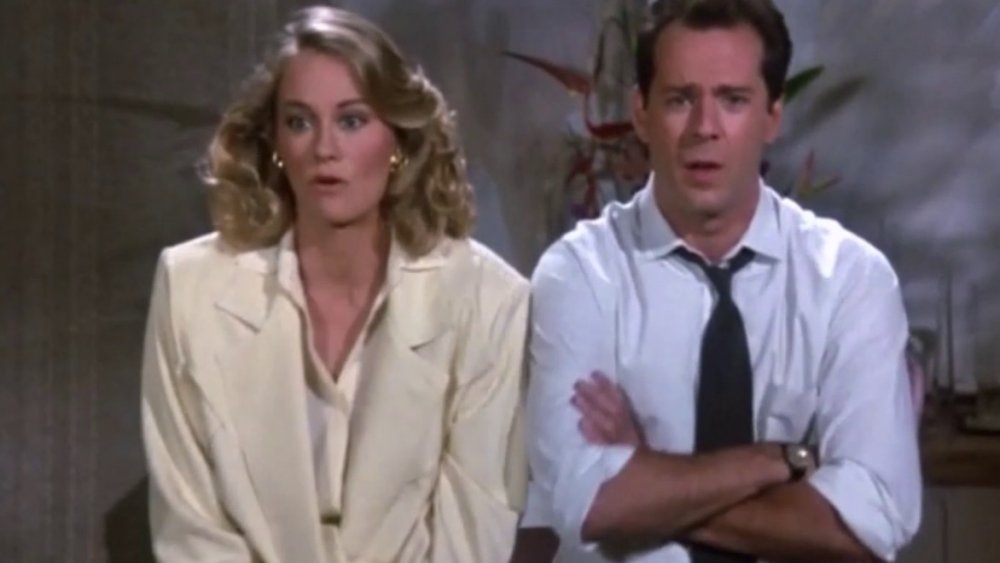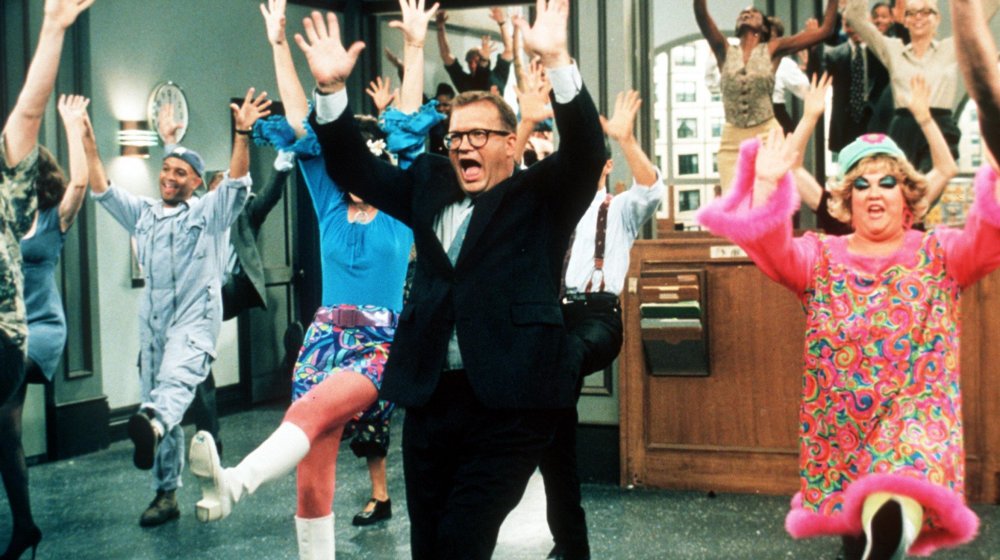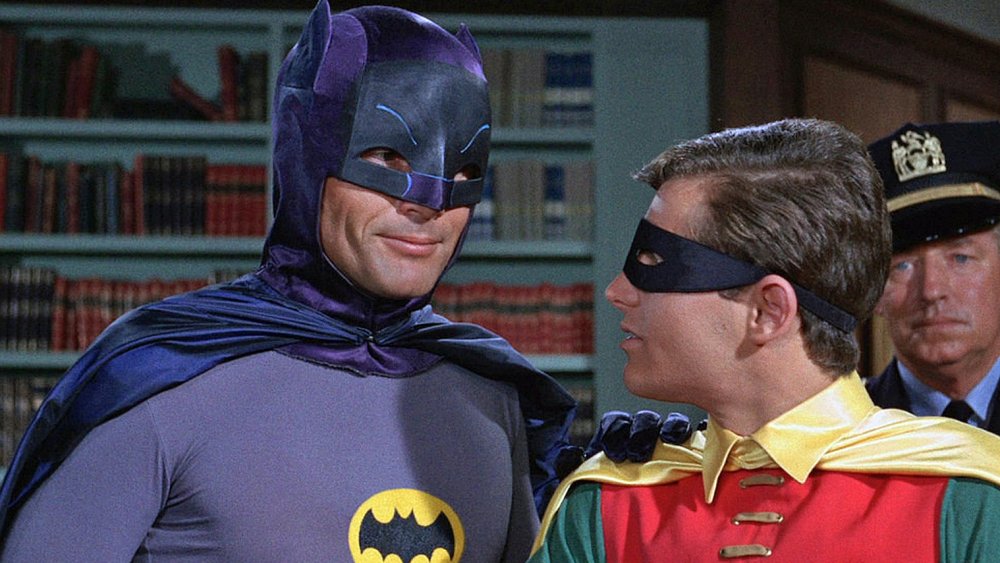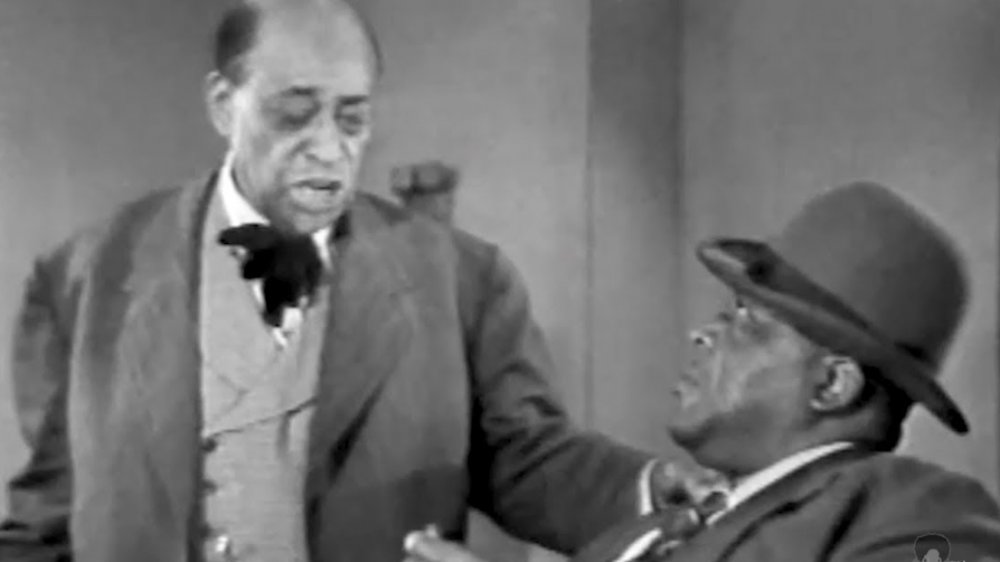Huge TV Shows That Totally Disappeared
Every year, TV networks debut dozens of new shows, hoping all will be big hits. But they never are, and only a few get renewed, and an even smaller percentage of those shows last long enough and maintain their popularity to one day enter syndication. This means that reruns of the series fill the schedules of local TV stations and cable networks, a familiar and comforting presence for channel-surfers.
While most big sitcoms and dramas that air for four or more years make it into this lucrative rerun territory, not all of those become perpetual TV staples. Among the most popular shows in reruns, we've got The Big Bang Theory, Last Man Standing, and Seinfeld. Other shows do well when offered on streaming platforms or when they're put on DVD. What makes a show succeed secondarily? It's hard to say, but simply being a highly watched show in its original run doesn't seem to be the only factor. Plenty of shows captured the public's attention for a while and then never again, owing to changing tastes, lack of availability, or other odd X factors. Here are some major television shows that, for whatever reason, faded from view.
The Wonder Years had too much music to make it
Debuting after the 1988 Super Bowl, The Wonder Years was an instant hit. A coming-of-age, single-camera dramedy targeted to Baby Boomers and set exactly 20 years prior in the tumultuous late 1960s, the show told the story of Kevin Arnold (Fred Savage) as he aged from tween to man while interacting with changing times, traditional parents, and his first love, girl-next-door Winnie Cooper (Danica McKellar). Nominated for the Emmy Award for Outstanding Comedy Series four times and winning once, The Wonder Years routinely hung out in the annual list of the most-watched shows on TV, and when it had a few dozen reruns banked, it successfully entered into syndication.
But when the primary method of consuming old television series changed from reruns to DVDs in the 2000s, The Wonder Years didn't get to join in the lucrative boxed set party. The Wonder Years finally made it to DVD in 2014, when physical media was on the way out and streaming was rapidly gaining popularity. The reason it took so long? The Wonder Years featured dozens of songs from the 1960s — popular hits of the era, recorded by the original artists. Deals had been worked out for music rights in the show's initial broadcasts, but those agreements took years to renegotiate for DVD.
The Dukes of Hazzard clashed with changing cultural tastes
Rowdy, vehicular entertainment enjoyed a big moment in the late 1970s. The road chase comedy Smokey and the Bandit was the second-biggest movie of 1977, trucker-inspired citizens band radios became a fad, and The Dukes of Hazzard was a ratings smash. Set in rural Georgia, rascally cousins Bo and Luke Duke were forever evading corrupt lawmen Boss Hogg and Sheriff Rosco P. Coltrane. The Duke boys, portrayed by John Schneider and Tom Wopat, made their daring escapes with the aid of the true star of Hazzard — the General Lee, their souped-up Dodge Charger, painted orange and adorned with the Confederate battle flag.
Dukes was an instant top 20 hit upon its debut in 1979, and by the 1980-81 season, only Dallas drew more viewers. As The Dukes of Hazzard was very much a product of the late '70s, it looked and felt dated when the glitzy '80s took hold. It could be seen in reruns occasionally, winding up on TV Land in the 2010s. But in 2015 (via The Hollywood Reporter), the network deleted the show from its schedule. Dukes prominently featured the "rebel" flag, which is widely regarded as a symbol of hate because of its associations with the pro-slavery Confederacy. The network's action, along with producer Warner Bros. announcing that it would no longer make General Lee merchandise bearing the Confederate flag, came in the wake of a racially motivated shooting, wherein a white man opened fire on a predominantly Black church in South Carolina.
When Roseanne Barr left Roseanne, Roseanne disappeared
In 1988, comedian Roseanne Barr helped turn her sarcastic routines about being a "domestic goddess" into a TV series. On Roseanne, Barr portrayed Roseanne Conner, matriarch of a struggling, working-class Illinois family. It was the #1 show on TV in the 1989-90 season, and it stayed near the top of the heap for years.
So, when networks began reviving old hits in the mid-2010s, Roseanne was a logical choice. Unlike the usual reboots that simply rehash the original series, the new Roseanne felt fresh and timely. Not since Roseanne went off the air in 1997 had a network sitcom really reflected what real-life looked like for millions of Americans. The Conner family faced economic problems, opioid addiction, and heated familial political fights. Viewers embraced the reboot, and it finished the 2017-18 season as the second most-watched scripted show on broadcast TV, leading ABC to order another season.
Then on May 20, 2018, Barr tweeted her thoughts on Valerie Jarrett, an advisor to President Barack Obama. Barr suggested that Jarrett had ties to the Muslim Brotherhood, an organization some have called a terrorist group, while also comparing the person of color's appearance to that of an ape. Barr apologized, then blamed a sleep drug for her behavior. But the damage was done. ABC canceled season two of new Roseanne. Television distributor Viacom also acted quickly, removing reruns of the original series from outlets such as Paramount Network, TV Land, and CMT.
Six Feet Under couldn't stay alive for long
Alan Ball, fresh off of winning an Academy Award for writing American Beauty, took his talents to HBO in 2001 with Six Feet Under. The cruelty and eventuality of death permeated most every moment of the series. Patriarch Nathaniel Fisher (Richard Jenkins) ran a funeral home and, after dying in the first episode, appeared as a ghost to his grown sons (Peter Krause, Michael C. Hall), who not only prepare bodies for burial but flirt with oblivion in their own way. The audacious series was a hit for HBO, and over its five-year life, it earned 53 Emmy Award nominations.
Six Feet Under aired on HBO in the early 2000s, a fruitful period for the prestigious network. But since the last Six Feet Under episode aired in 2005, its stature as one of HBO's best shows has slipped, overshadowed by its contemporaries. The Sopranos never really left the conversation (in part for its shocking cliffhanger ending), Sex and the City continued with two films, and Deadwood got a made-for-TV wrap-up movie. Six Feet Under, with a famously finite ending (a flashforward reveals the deaths of all the main characters) just couldn't compete. And besides, that's probably a tall order for a show like this one. It was quiet, meditative, deeply sad, and every episode made viewers reckon with their mortality — which probably kills the replay value.
Murphy Brown was too timely to endure
Once upon a time, Murphy Brown was a really big deal. Debuting in the fall of 1988, '70s movie star Candice Bergen starred as legendary, irascible, and dedicated TV journalist Murphy Brown, star of a magazine show called FYI, who recently sought treatment for alcoholism. The mature, adult-oriented show did very well, ranking as high as #3 in the annual ratings, and Bergen won five Emmy Awards for her performance.
According to The Buffalo News, TV industry pundits expected Murphy Brown to be a big hit when syndicated reruns hit hundreds of local stations. Instead, old Murphy Brown episodes underperformed, and they slowly disappeared into obscurity. The main reason? Murphy Brown was such a timely show, with jokes and storylines referencing late '80s and early '90s politics — particularly President George H.W. Bush and Vice President Dan Quayle — that as time passed, the references grew ever more irrelevant, obscure, and unfunny. And perhaps because Murphy Brown hadn't built up a huge fan base after its original run ended in 1998, its 2018 reboot didn't do as well as similarly revived and enduringly popular series like Will & Grace and Gilmore Girls. CBS ended Murphy Brown 2.0 after just 13 episodes.
When Bill Cosby went to prison, The Cosby Show disappeared
On The Cosby Show, popular comedian Bill Cosby portrayed Cliff Huxtable, an obstetrician and hands-on father of five who loved ugly sweaters, hoagies, family lip-sycs, and his wife, Clair. The Cosby Show won the Emmy Award for Outstanding Comedy Series in its very first season, inspired ripoffs (Growing Pains) and spinoffs (A Different World), and it was the most-watched show on TV for five straight seasons, pulling NBC out of a long and fallow period as the America's lowest-rated network. When reruns were offered to syndicators in 1988, it set a record for highest-priced rerun package in TV history — $4.8 million per episode. Old episodes of the once-beloved series aired consistently on various outlets for more than two decades after The Cosby Show ended in 1992.
Bill Cosby portrayed an iconic TV dad on one of the most wholesome shows of all time, but rumors and accusations of impropriety and criminal sexual assault dogged him for decades. Cosby faced a lawsuit over such allegations in the mid-2000s, but the tide turned in 2014 after a clip of comedian Hannibal Buress discussing Cosby's dark side went viral and reignited the conversation. More women came forward, alleging Cosby assaulted them. Netflix and NBC cancelled Cosby projects, while TV Land, ASPiRE, and Centric cut The Cosby Show from its lineups. By 2018, when Cosby was sentenced to a long prison sentence for sexual assault, his series had disappeared from Bounce TV, too.
Moonlighting ruined itself for reruns
An innovative TV show that broke the fourth wall and mixed comedy, mystery, drama, and romance with the sensibility of an old Cary Grant screwball comedy, Moonlighting was probably the most original show of the '80s. Cybill Shepherd and Bruce Willis portrayed Maddie Hayes and David Addison Jr., respectively, private detectives and business partners always threatening to start a romance. The once white-hot show — a top ten hit in season three — fell to 49th place in 1988-89, its fifth and final season. While the show's rapid popularity decline has been attributed to writers resolving David and Maddie's show-fueling sexual tension by putting the characters in bed together, viewers may have lost interest because those characters rarely shared the screen together in Moonlighting's fourth season, as Shepherd left for a while after giving birth to twins, and then Willis was off making Die Hard.
The numbers suggested that the public was no longer interested in Moonlighting, but even if people did want to revisit it, they couldn't. Because the series wrapped with 66 episodes, it couldn't get syndicated, as it didn't meet the 100-episode threshold TV distributors at the time required. The show remained hard to find. Moonlighting popped up for a short while on Bravo in the early 2000s, and a DVD box set hit stores in 2005, then went out of print. As of 2020, it's not offered by any streaming service.
Music rights issues buried The Drew Carey Show
Drew Carey is a well-known figure, as he's hosted The Price Is Right for years. But not so well-known now is Carey's sitcom, The Drew Carey Show. Sort of a blue-collar, Cleveland-set Friends, Carey played a corporate drone who liked to drink beer with his pals. The show got so popular — a top 20 hit in its second season — that ABC gave Carey a lot of creative freedom. Cast and crew filmed elaborate musical numbers, including one set to the 1965 Vogues hit "Five O'Clock World" and another to a version of Ian Hunter's "Cleveland Rocks." It also produced stunts, like live episodes and error-loaded "What's Wrong With This Episode" installments.
However, The Drew Carey Show burned out quickly. It fell to #56 in the ratings by its seventh season and to #120 in season eight. ABC would've cancelled it, but it couldn't. Back in 2001, when the show was popular, it signed a deal with Carey that kept The Drew Carey Show in production through its ninth season. ABC quietly aired those final episodes in the summer of 2004.
So did The Drew Carey Show vanish from the collective consciousness because nobody wanted it anymore? Perhaps, but it's probably due to expensive music licensing issues. Re-upping the rights to all the songs it used before proved so tough that the show has never appeared on DVD or on streaming services.
Holy copyright issues, Batman!
It's astounding that the 1966-68 Batman ever made it onto TV at all. And yet, in its first season, it was a top ten smash that aired twice a week, playing as a live-action cartoon, with its brightly colors, campy villains portrayed by B-list celebrities, and fight scenes punctuated with action words ("Bang!" "Kapow!" "Zok!") that filled up the screen. And heading it up was Adam West, playing the Caped Crusader with an idiosyncratic acting style that suggested he was in on the joke, as well as Burt Ward as a hyperactive Robin. Batman reruns were a staple of local networks and early cable channels well into the 1990s, but when most every old show found its way onto DVD in the 2000s, the show missed out because of a complicated labyrinth of rights issues that took years to sort out.
Before the show entered production, ABC bought the film/TV rights to the Batman character from DC Comics, then entrusted 20th Century Fox and Greenway Productions to make the show. Those companies split ownership, with Greenway getting the masters and Fox retaining distribution rights. DC and Warner Bros. later came under the same corporate umbrella, and Warner became very protective of its Batman cash cow and adamantly refused to do business with rival Fox when it came to negotiating a DVD deal. After John Stacks, a man who made Batmobile model kits, sorted through Greenway head William Dozier's personal papers and found a contract that allowed parties to buy each other out, the whole mess got untangled, and a home video collection of Batman hit stores in 2014.
Amos 'n' Andy was a reminder of an ugly time period
Amos 'n' Andy was among the first sitcoms in its original incarnation as a radio show, airing from 1928 until the mid-1950s. Then it made the jump to television, and that Amos 'n' Andy ran on CBS from 1951 to 1953. But Amos 'n' Andy could also be held up as an example of racist entertainment, common until the Civil Rights Movement of the 1960s.
Both versions of Amos 'n' Andy were set in Harlem, and its two main characters were African-American. In the radio version, white creators Freeman Gosden and Charles Correll voiced the title characters and donned blackface to play them in a 1930 spinoff movie. When the show moved to TV, Black actors Alvin Childress and Spencer Williams took over the roles, but the plots of the series still trafficked heavily in broad, harmful depictions of African-Americans.
Organized protests by the NAACP led to the TV show's cancellation in 1953, despite it being a top 30 ratings hit. A letter to advertisers asking for their withdrawal of sponsorship called Amos 'n' Andy "a gross libel of the Negro and distortion of the truth." Still, reruns on local stations performed very well for a decade. But with the NAACP persistent in its opposition, CBS withdrew Amos 'n' Andy reruns from American television in 1966. Only in 2012 did a small Houston-based network quietly start airing the show again.
